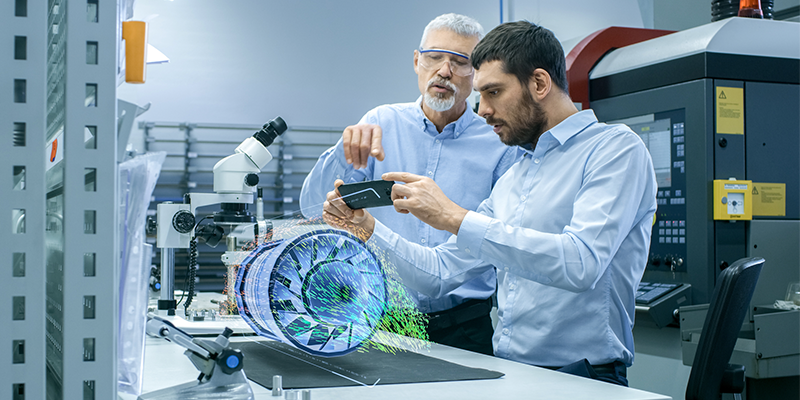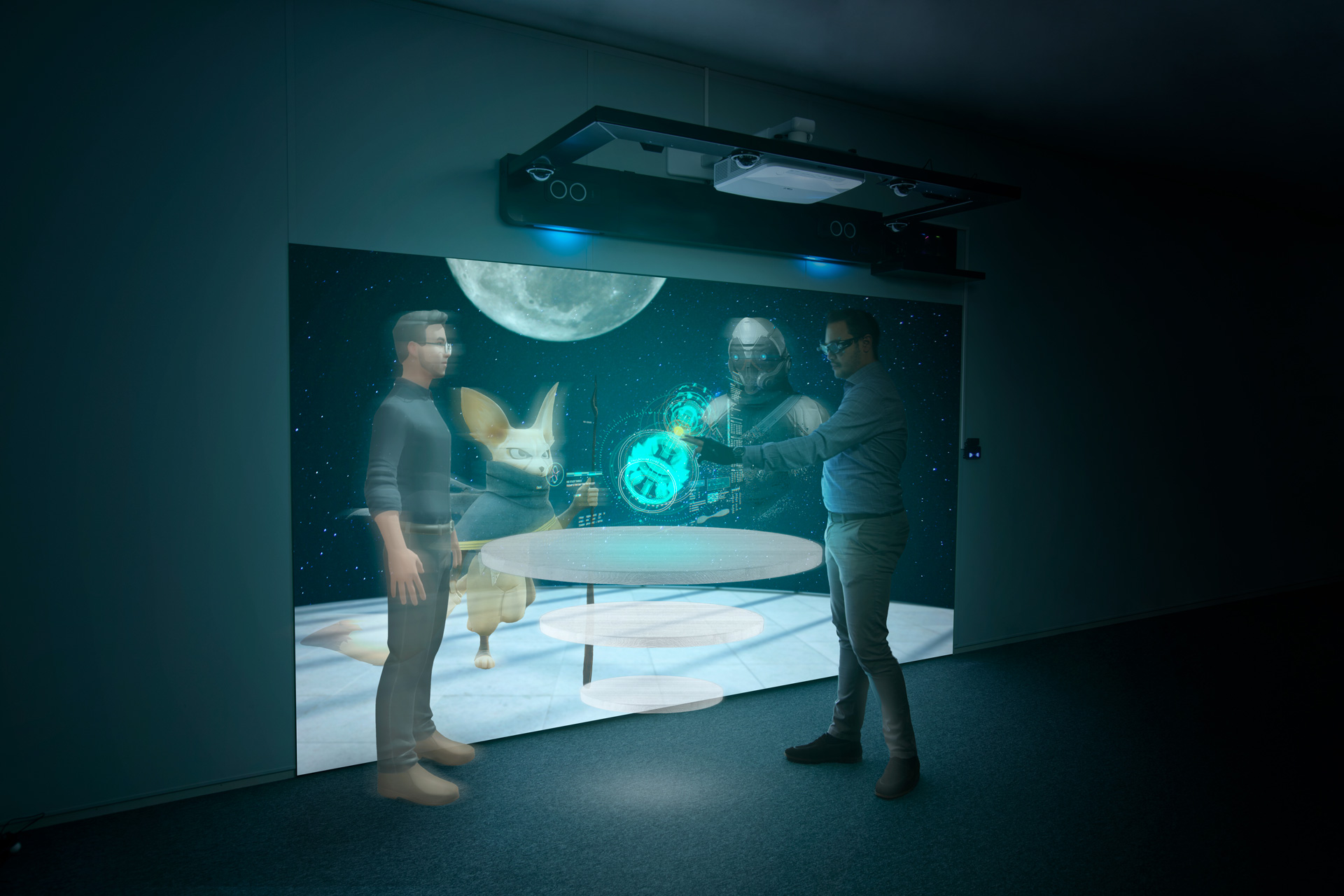Multibody dynamics calculations in a real-time holographic
Engineering designs are made with the help of 3D images. This means that they are displayed and assessed on 2D monitors. That is why many designers start using VR to be able to look at a 3D representation. But this has all the disadvantages we associate with using VR: no awareness of your surroundings and wearing a clunky headset.
That is why we developed a solution for the engineering and manufacturing design industry. Now you can display your 3D designs in a real immersive holographic without using a headset.
Our engineering solution is able to use data from all major 3D design software, such as Autodesk, and display the information in a real-time full immersive 3D holographic. This includes all the necessary multibody dynamics calculations. You can walk around the model – or walk even through it – and view it from all sides, all the while being able to discuss the display with colleagues or customers.
Benefits for Engineering & Manufacturing
Ideal for prototyping
Using holographics is the ideal solution for cost-effective prototyping. The 3D model in the holographic is sharp in every detail.
Discuss in real-time
There is no need for a headset, so participants viewing the holographics can see each other and discuss the model.
Make changes on the fly
Using holographics, engineers can make changes in the design on the fly. This makes it possible to get a deeper understanding of how it works.
Make decisions in early stages of development
Prototypes are used to study specific parts of the product. This means taking the prototype apart and switching out certain parts, often making it necessary to produce different versions of these parts, to see what works best. Holographics can save costs because parts can be swapped without producing prototypes.
With the use of holographics, engineers can also determine the manufacturing protocol and decide whether the end-product will be profitable.
For certain products such as cars and airplanes it is possible to create lifelike simulations, ensuring that the end product is behaving as expected on the road or in the air.







